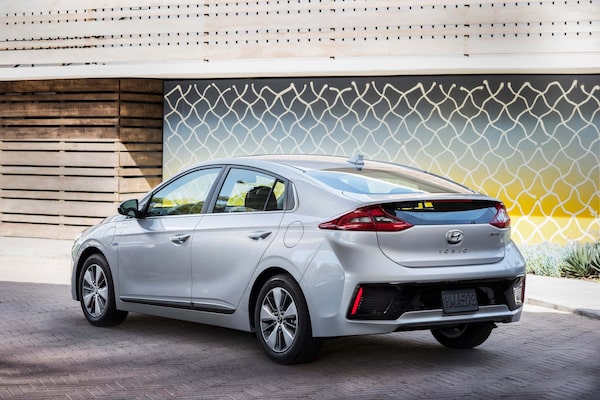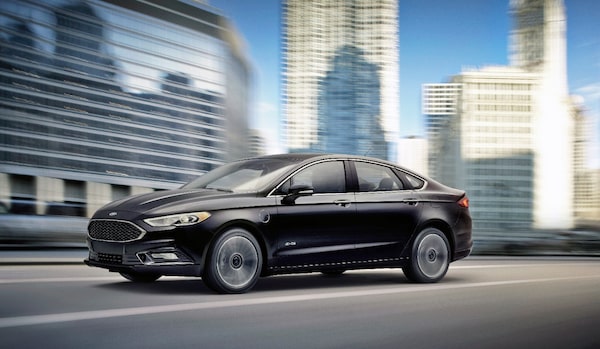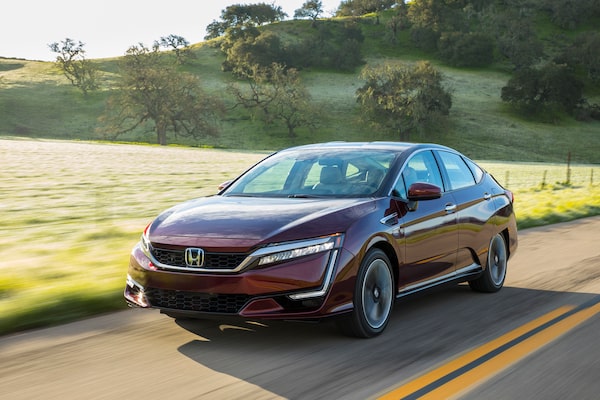I’m looking for an inexpensive car that I can own for the next 10 years. I don’t drive a lot. I’d like to buy an electric car sometime – the future in Ontario is electric because of nuclear energy. I want a car that is designed for Canadian winters, that is easy to park, with a good suspension for the many potholes, and that can deal with icy, snow-driven roads that don’t get plowed for days. What do you recommend? – Ian
Richardson: If you’re thinking about an electric car, I’d suggest getting it now: The Ontario government subsidy is $14,000 on a purely electric car (called a BEV, or battery electric vehicle), which is the most generous in North America, by far. Incentives are available in Quebec and British Columbia, too. But who knows how long they’ll last?
Lightstone: They’re not talking of ending it yet, are they?
Richardson: No, but electric cars will only gain in popularity as they’re forced on to us by government and manufacturer policy, and the subsidy will come down when they do. Right now, for example, the all-electric Volkswagen e-Golf is several thousand dollars cheaper in Ontario than its all-gas equivalent – although it’s sold out till next year.
Lightstone: Right, and eventually the incentives will run out, just like they did in B.C. a few years ago because so many buyers jumped on the electric-vehicle bandwagon. But if Ian is looking for a car built specifically for our brutal Canadian winters, then perhaps full electric isn’t the way to go?
Richardson: EVs don’t have a problem in the winter, except that their range might be halved on the coldest days. You don’t see the Norwegians complaining and a third of their cars on the road are some sort of electric.
Lightstone: But that’s because the taxes there are huge on conventionally powered cars – roughly double the cost of the equivalent EV – and they have a better network of charging stations.
Richardson: Which they can pay for with the earnings from North Sea oil. But we digress.
Lightstone: We do. So … electric car or not?
Richardson: I think Ian would probably do best with a plug-in hybrid electric vehicle, or PHEV. There are plenty of them around, they have unlimited range that’s great if they’re your only vehicle, and there’s still a generous rebate in Ontario for them. But there’s a potential hitch.
Lightstone: They’re all boring?
Richardson: Yup. The expensive ones are fun to drive, because they use the electric boost as much for performance as anything, but the more common or garden-variety PHEVs are built for economy. Which means – yawn.
Lightstone: The expensive ones are always more fun to drive. But what about something like the Hyundai Ioniq? And I’m not talking the full EV here, but the PHEV version. That way, Ian is saving fuel and it even comes standard with heated front seats (for our cold Canadian winters) and a heated steering wheel.

2018 Hyundai Ioniq.Handout
Richardson: Good choice. There’s only $7,000 back in Ontario for the PHEV Ioniq compared with twice that as a rebate for the full EV, but it brings the $31,999 price down to just slightly more than the regular Ioniq hybrid, which lists at $24,299, and it’s better-equipped. If you want the heated steering wheel with the regular Ioniq, you have to spend $2,200 more on the next trim level, although that includes heated rear seats.
Lightstone: So you’re saying it makes more financial sense in Ontario to buy the PHEV version than the regular hybrid?
Richardson: Yup. That’s just the way it is right now. And it’s not only Hyundais. The Ford Fusion Hybrid SE sells for $28,088, and the PHEV version sells for $33,588 – but in Ontario, you get a $7,000 rebate off the more expensive car, making it $1,500 cheaper, with better mileage and the same features.

2017 Ford Fusion Energi.Handout
Lightstone: Rebates vary per province and in Quebec Ian would only see an $8,000 rebate if he sprung for the full EV Ioniq. That number drops as low as $500 for a PHEV depending on the size of the battery. There’s a $600 rebate for charge-station installation at home in Quebec, too.
Richardson: B.C. is the only other province to offer rebates, with $5,000 off a full EV and much less for a PHEV. As a strictly financial advantage, this is an Ontario-only deal, but since Ian’s in Ontario, he should also look at the new Honda Clarity. It’s basically a plug-in equivalent of the Accord.
Lightstone: Ah yes, the Clarity. You get all the fun-to-drive of a Honda with the fuel efficiency of a PHEV – it has a range of up to 76 kilometres on battery alone, according to Honda. That’s good for a daily commute, and if there’s a charger at home, Ian may never have to use gas again. It’s quite a bit pricier than the Ioniq, though, with a starting price of $39,900.

2018 Honda Clarity.Honda
Richardson: It’s a size larger than the Ioniq, which is more Civic-sized, but don’t forget the Ontario rebate from that starting price. Its longer range knocks $13,000 from the MSRP, which brings it down to a manageable $26,900.
Lightstone: Still more expensive than the Hyundai, but you’re right, it is larger and better-equipped as well. So Ian needs to see which model he thinks he can live with on a daily basis. Ontario rebates put the Ioniq and Clarity pretty much on par, so it comes down to personal preference, and remember that the Clarity has a longer electric range (almost 20 km more) than the Ioniq.
Richardson: He shouldn’t forget the Ford Fusion, either. It’s been around longer, so the technology is a little older for it, but for size and features, it’s right on the money.
What car should you buy? Write to Mark and Miranda at globedrive@globeandmail.com.
Shopping for a new car? Check out the new Globe Drive Build and Price Tool to see the latest discounts, rebates and rates on new cars, trucks and SUVs. Click here to get your price.
Sign up for the weekly Drive newsletter, delivered to your inbox for free. Follow us on Instagram, @globedrive.